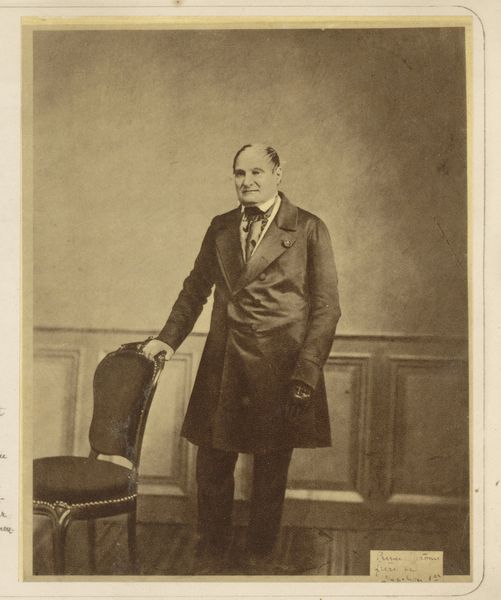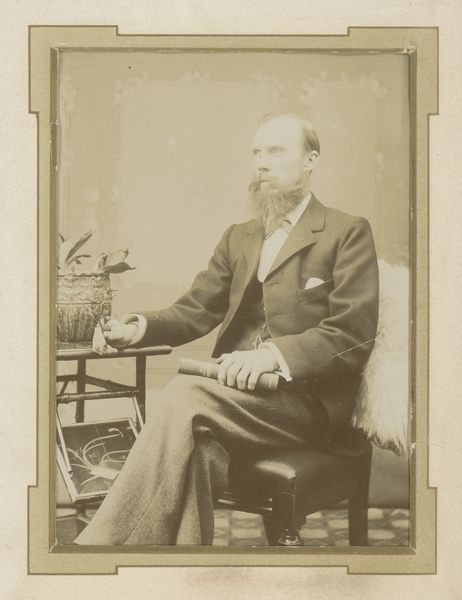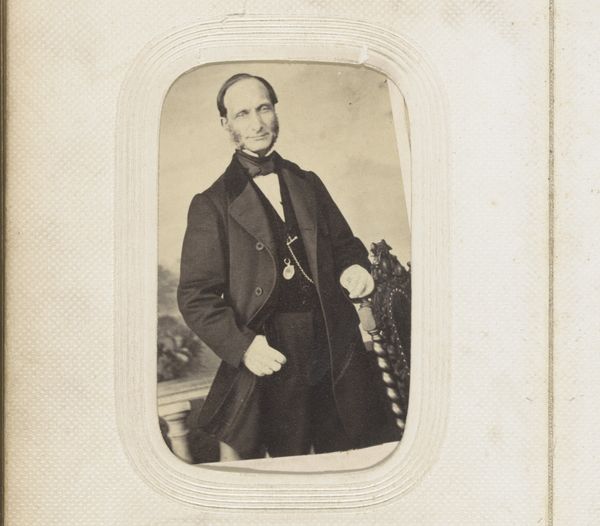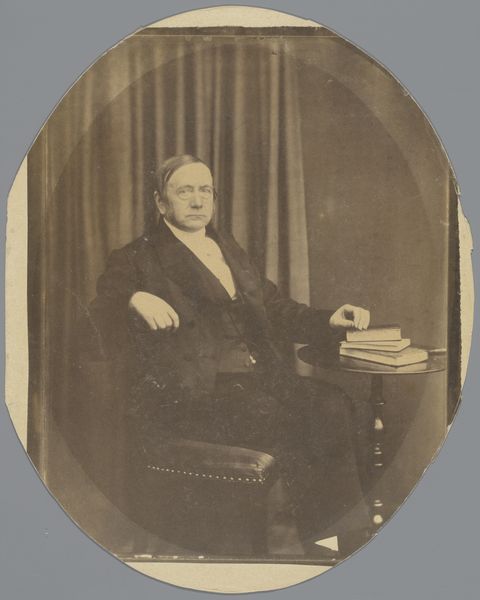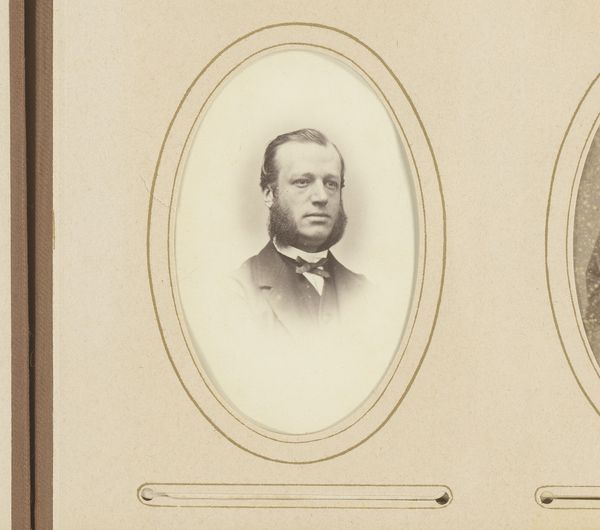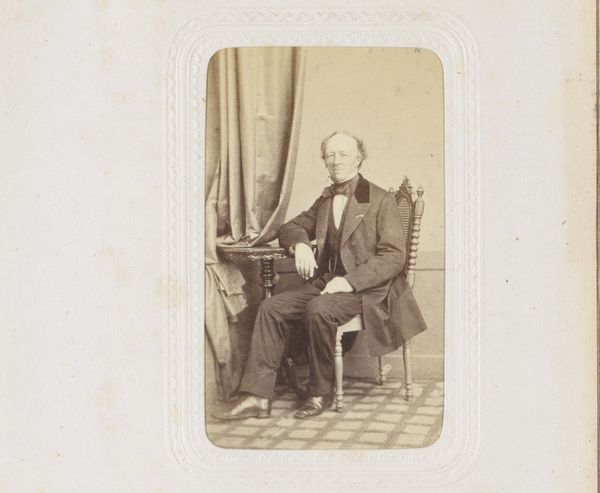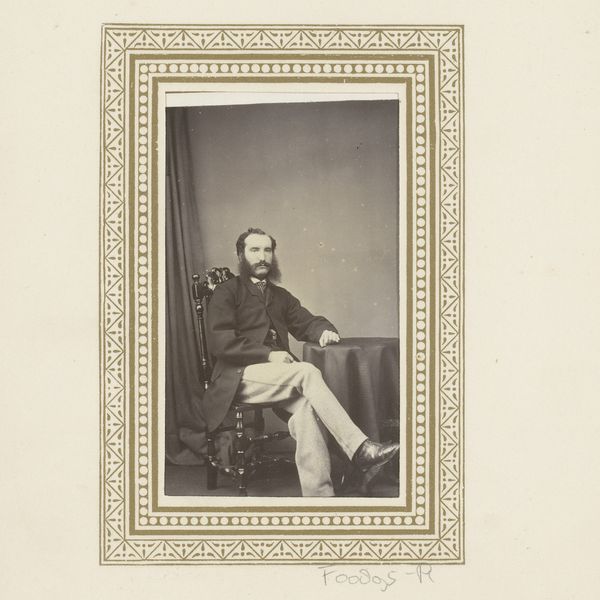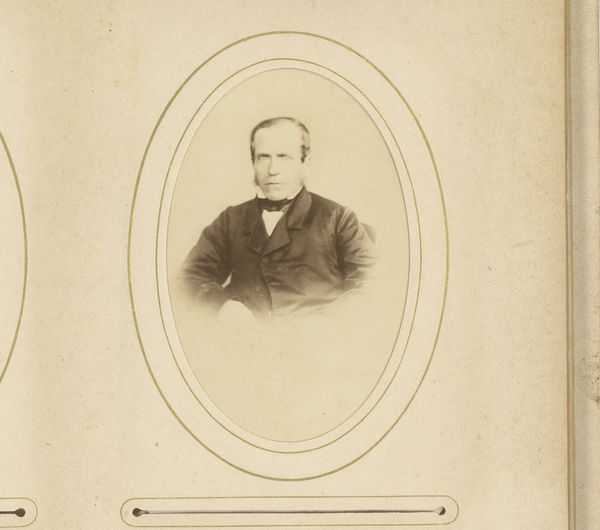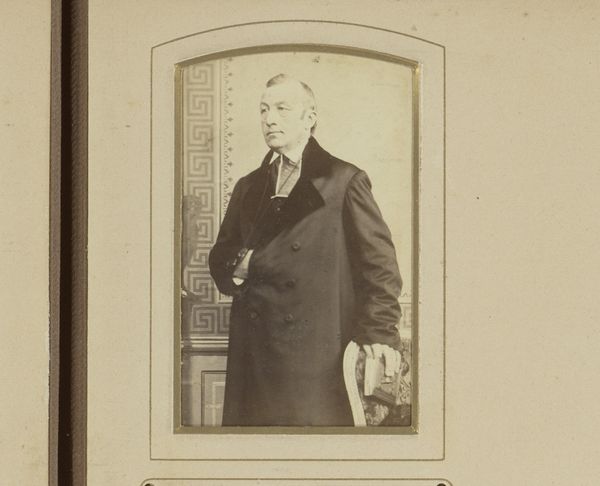
daguerreotype, photography
#
portrait
#
daguerreotype
#
photography
#
historical photography
#
genre-painting
Dimensions: height 103 mm, width 63 mm
Copyright: Rijks Museum: Open Domain
Editor: This is "Portrait of a Man, Sitting at a Desk," an 1860-1890 daguerreotype photograph by Maull & Co. There’s such a formality and gravity to it, a posed stillness. It makes me wonder about the man's life and the photographer's choices. How do you interpret this work? Curator: I’m struck by the power of symbols present, even in something as seemingly straightforward as a portrait. The desk, the book – they suggest intellectual pursuits, perhaps, knowledge and industry, echoing the rise of the Victorian middle class and their aspiration for self-improvement. The suit and tie also signify his status, contrasting with a casual mode of attire. But it’s the way his hands rest on the book, almost protective, that fascinates me. What does that posture say to you? Editor: That he’s proud? Maybe protective, as you say, of his work or of learning itself? Curator: Exactly. Photography itself, newly accessible then, was seen as both truth and artifice. A daguerreotype immortalizes an individual, but also creates a symbolic representation of who that person wishes to be seen as. Do you notice anything else symbolic? Editor: Hmm... the floral pattern on his lapel? A secret society membership, perhaps? Curator: Precisely! Small visual markers can communicate complex social meanings. The image acts as a mirror reflecting both the individual and the cultural values of the time. We are able to decipher aspects of that era and culture. Editor: I never considered how much a simple portrait could hold. It really brings the Victorian era and this man's world to life. Thanks! Curator: My pleasure! Visual culture transmits vast information about societal ideals through single icons.
Comments
No comments
Be the first to comment and join the conversation on the ultimate creative platform.
